Get PeakVisor App
Sign In
Search by GPS coordinates
- Latitude
- ° ' ''
- Longitude
- ° ' ''
- Units of Length

Yes
Cancel
Share ×

Scan the QR code and open PeakVisor on your phone
❤ Wishlist ×
Choose
Delete
Founded in 1935, Portofino Natural Regional Park (Parco Naturale Regionale di Portofino) in the Italian region of Liguria is a beautiful area offering an interesting mix of rural and maritime landscapes. There are 9 named mountains in the Portofino Natural Regional Park. The highest and the most prominent mountain in the park is Mount Portofino (Monte di Portofino) at 616 m (2,021 ft) in elevation.
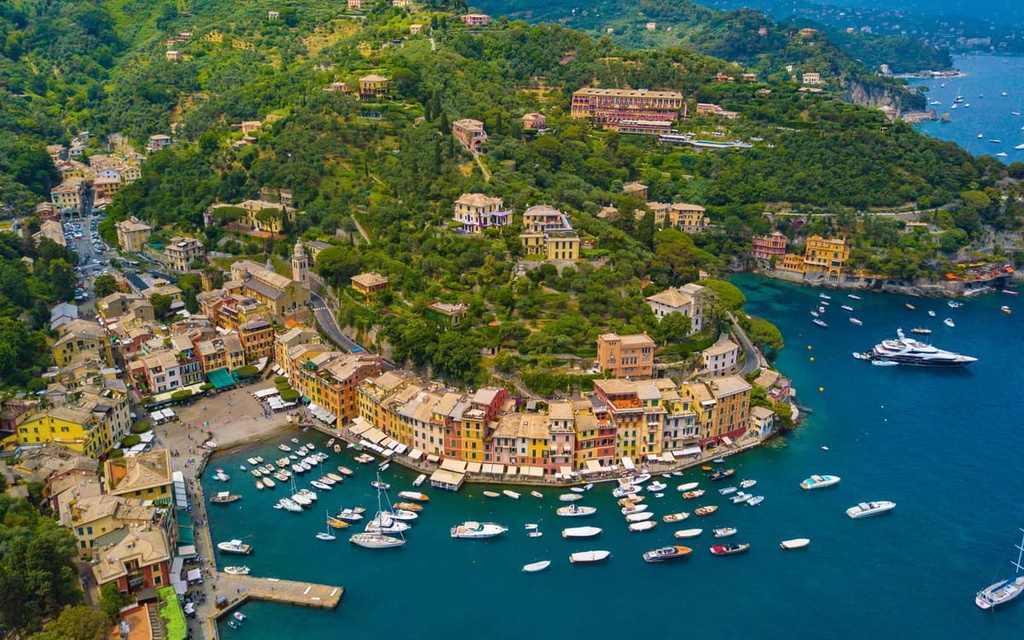
The Portofino Natural Regional Park is located along the coast of the northernmost part of the western Mediterranean Sea. Portofino is situated around 25 km (15 mi) from Genoa between the city and the popular Cinque Terre. It is nestled along the Levante (East) riviera and the peaks in the park are part of the Ligurian Apennines.
The park extends along both sides of the promontory of Portofino, which dominates much of the protected area. The Portofino promontory is characterized by a ridge which divides the Tigullio Gulf and the Paradiso Gulf, disrupting the continuity of the coast between Sestri Levante and Genoa.
Portofino’s namesake park stretches some 13 km (8 mi) along the coast from Camogli to Santa Margherita. Its highest point is Mount Portofino at a humble 616 m (2,020 ft) in elevation. The park consists of the municipalities of Camogli, Portofino, Santa Margherita Ligure, and Rapallo.
Hikers to Portofino Natural Regional Park can enjoy views across both the Paradise Gulf, and the Tigullio Gulf. You can also get views that stretch across to Sestri Levante and Bergeggi. Legend has it amongst Ligurians that on a clear day, you can spot the French island of Corsica on the horizon.
The Portofino Natural Park features two different geological formations: limestone from Monte Antola, and conglomerate from Portofino.

The limestones of Monte Antola form the northwestern part of the promontory. These rocks formed between 90 and 55 million years ago and they consist of alternating fractured and deformed layers of limestone, dark gray marl, calcarenites, light brown and yellow marls, and black shales. Many fossils can be found in this rock, such as Helminthoidea labirintica, a worm that once moved along the seafloor.
Meanwhile, a conglomerate from Portofino dominates the southern part of the promontory. Dating back around 30 million years, the conglomerate consists of pebbles and coarse fragments called clasts that are immersed in sandy clay and held together by carbonate. The rock is incredibly compact and forms a jagged coastline, creating ridges that descend sharply into the sea.
Coves, inlets and bays are typical of this part of the coastline. As a result, outdoor sports such as coasteering and cliff jumping are popular since people try to make the most of the high ridges and deep seas found in the region.
Despite its small territory, the Portofino Natural Regional Park offers a variety of environments, including Mediterranean, montane and middle-European vegetation.
It hosts around 700 different plant species due to the different microclimates and habitats created by its geology and climate. In the park, it’s easy to quickly move from sunny cliffs overlooking the Mediterranean sea, to cool, humid forests on the mountainside.
The north-facing slopes of Portofino include trees and shrubs associated with a more continental climate, such as oaks, sweet chestnut, and ferns. This area tends to remain cool, even in the hot summer months. Meanwhile, the southern slopes of the park that face the sun and sea host a variety of mediterranean plants such as strawberry trees, sea fennel and Mediterranean shrubs.
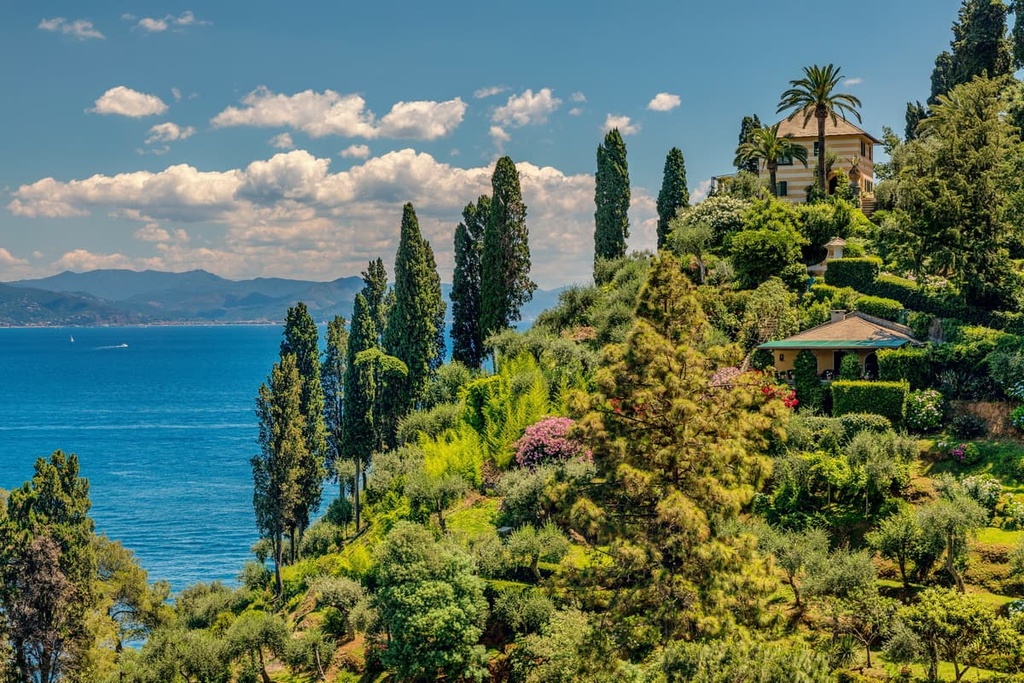
Three types of pines are present in the park and typical of the region: Domestic pine, Aleppo pine, and Maritime pine. An endemic species to the park is the spoon-leaved saxifrage (Saxifraga cochlearis), which is also the symbol of the park. This plant can also be found in the Maritime Alps.
The original holm oak woods of the Portofino Natural Regional Park were used for timber after World War II. They are now more sparsely scattered throughout the park.
Fauna in the park includes insects such as butterflies and stag beetles as well as amphibians and reptiles, such as the northern spectacled salamander, three-toed skink, bright green mediterranean tree frog, and green lizard. Wild boars can also be found, or more likely heard, around the woodlands of the park.
Portofino Natural Regional Park is also located along a major bird migratory route between Europe and Africa. Hundreds of different bird species pass through the park each year, including the peregrine falcon, kestrel, robin, willow warbler, little egret, Alpine swift, green woodpecker, and blue rock thrush, among many, many more.
Surrounded by four coastal towns, the protected area of Portofino is sparsely scattered with settlements along the hillside, with a mix of villas, churches, small settlements, and farms of olive and citrus groves.
Human presence in the promontory has been documented since the Bronze Age (fourteenth century BCE). Portofino was known in Roman times as Portus Delphini, offering the Romans a favorable natural protected landing in the Mediterranean.
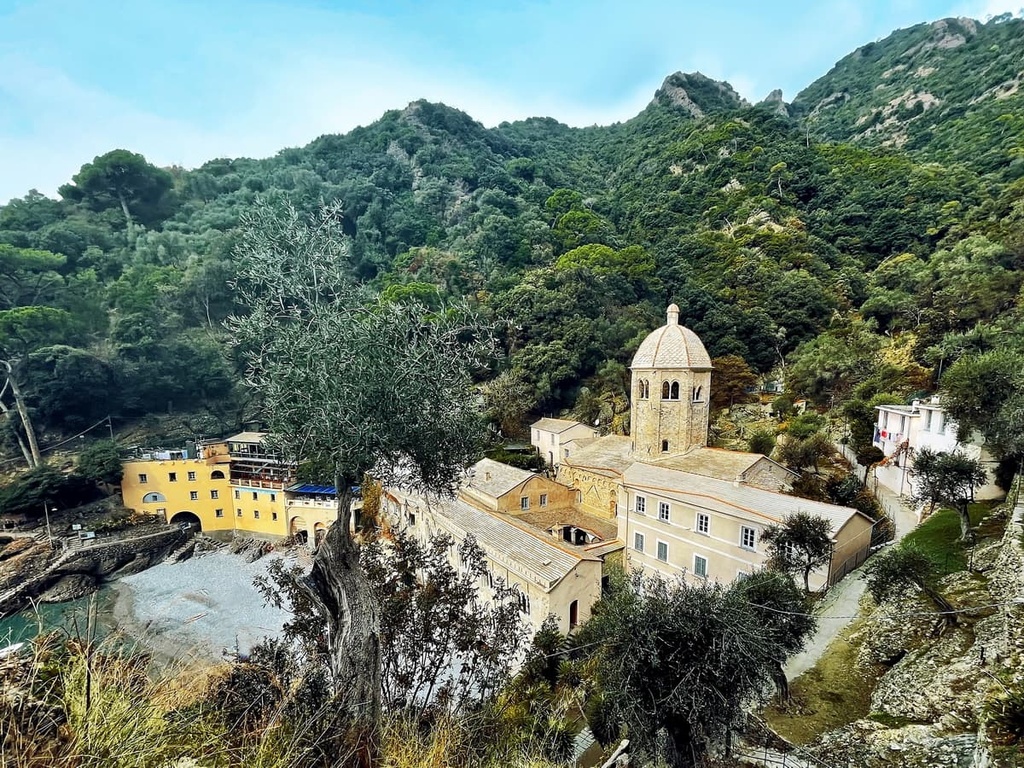
The Abbey in San Fruttuoso, which can only be reached by sea or hiking trails, was important during the tenth century. During that time, it was run by the Benedictine monks that controlled the area.
Off the coast of San Fruttuoso, you can also find the Christ of the Abyss sculpture, which lays on the seafloor at a depth of 17 m (55 ft). It’s now a popular diving and snorkeling destination.
The area is known for fishing as well as its sea-faring past. In fact, Camogli is known as ‘the city of 1000 white sails’ due to its naval force, all of which is documented in the Gio Bono Ferrari Maritime Museum in Camogli.
The Portofino Natural Regional Park is also home to several other sites of historical interest, such as World War II bunkers overlooking the sea and the Portofino lighthouse.
There are around 80 km (50 mi) of hiking paths in the park that offer spectacular views out over the Mediterranean Sea.
The area is suitable for trekkers of all levels as there’s a mix of trails of different lengths and difficulty. Although by the sea, there is a lot of up and down on these trails, so make sure to wear proper walking shoes!
Portofino’s hiking trails tend to be either old mule tracks or rough paths that travel along rocky cliffs or through wooded areas. Architectural remnants such as the World War II bunkers can be viewed while hiking along the many panoramic paths.
This hike takes you from the quaint town of Camogli through San Fruttuoso and on to Portofino and Santa Margherita.
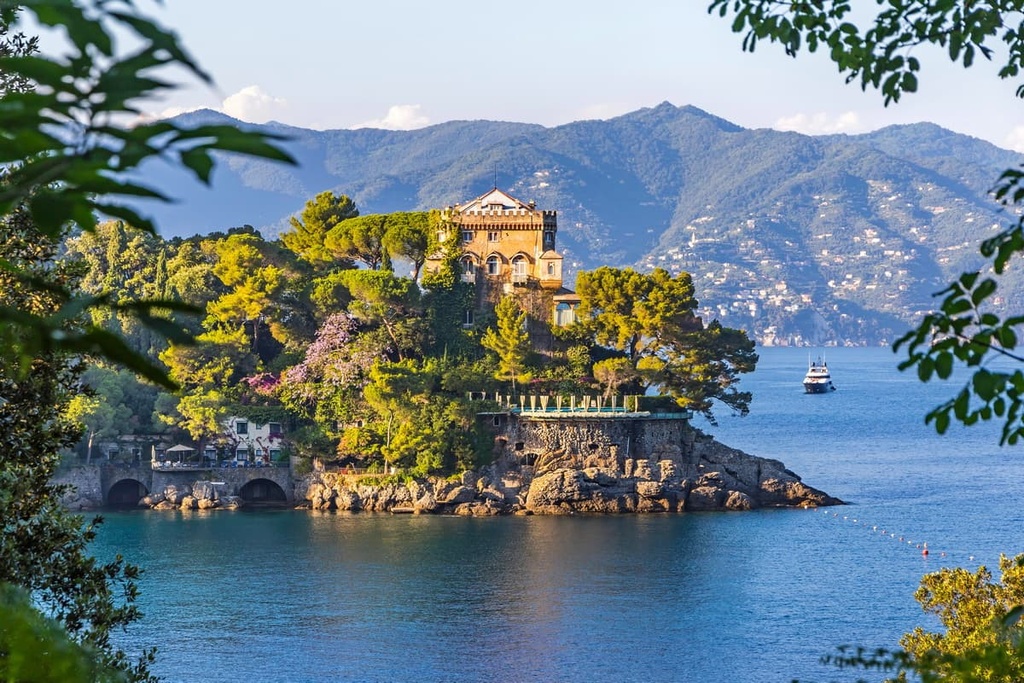
This trail can be broken down into several different hikes, such as San Rocco to San Fruttuoso or Santa Margherita to San Fruttuoso. Alternatively, you can do the full route, which will take you the better part of a day.
These routes can be hiked all year round, although they can best be appreciated on a sunny day during the cooler months of the year.
There are several side trip options to choose from along the route. For example, you can opt to hike along the exposed coast, taking in spectacular sweeping views across the Mediterranean Sea. All paths are well signposted throughout.
The route from San Rocco to San Fruttuoso is very exposed and parts of it have chains to help you across large cliffs. This part of the trail is therefore best for more experienced hikers. It is not recommended for anyone that’s afraid of heights as the path runs quite close to the edge of the cliffs.
There are also options for less-experienced hikers to go inland into the wooded park before descending down into San Fruttuoso. The wooded paths offer much needed shade during the hot summer months.
The San Rocco di Camogli - Punta Chiappa walk is best done in summer or early fall when you can appreciate the beautiful waters of Punta Chiappa.
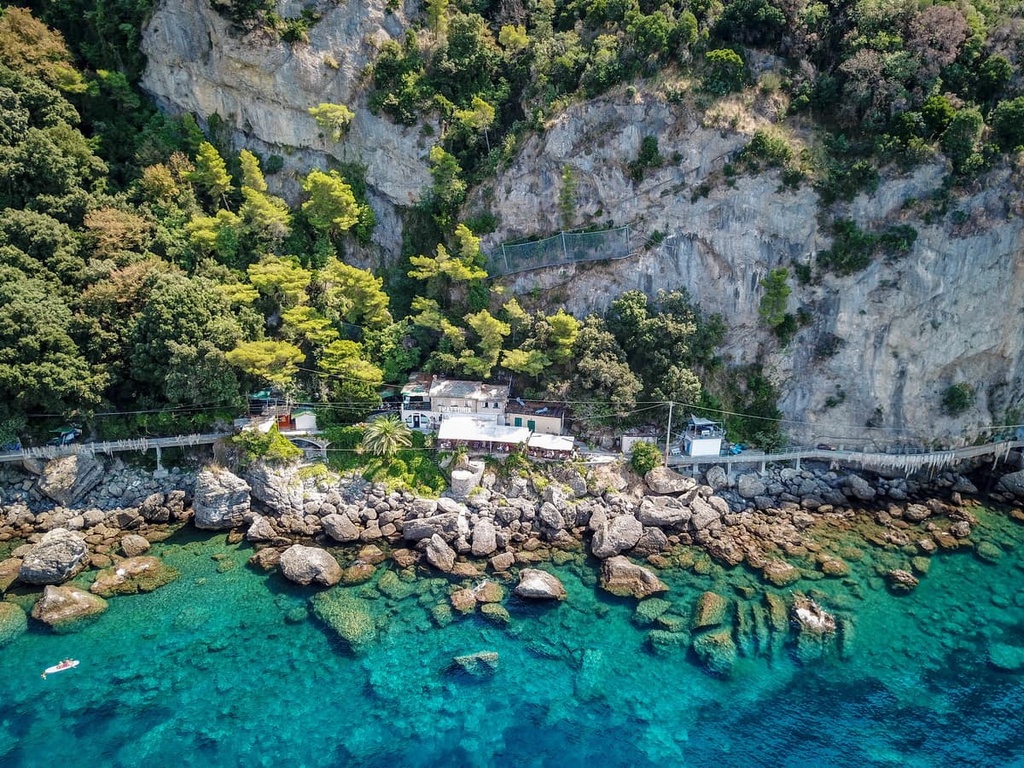
Starting from either Camogli or San Rocco, you will descend down around 1,000 steps before reaching Punta Chiappa, a jagged rocky headland, surrounded by deep waters.
Here, you can swim and snorkel, or do a little cliff jumping. You then have the option to either walk back to San Rocco or Camogli and then onto San Fruttuoso, or you can take a ferry back to Camogli.
The Portofino Vetta - Portofino Mare trek is a good place to start your hikes in Portofino Natural Regional Park.
You can walk up from Ruta di Camogli or park directly in Portofino Vetta, a small area of Camogli, where you’ll find an old abandoned luxury Art Nouveau hotel. You’ll begin your walk through a shady, wooded area and have a myriad of paths to choose from.
You can opt to do a circular route within the woods or you can descend down to meet the jet set in Portofino. Alternatively, you can walk down towards San Fruttuoso or Camogli before looping back to Portofino Vetta to finish.
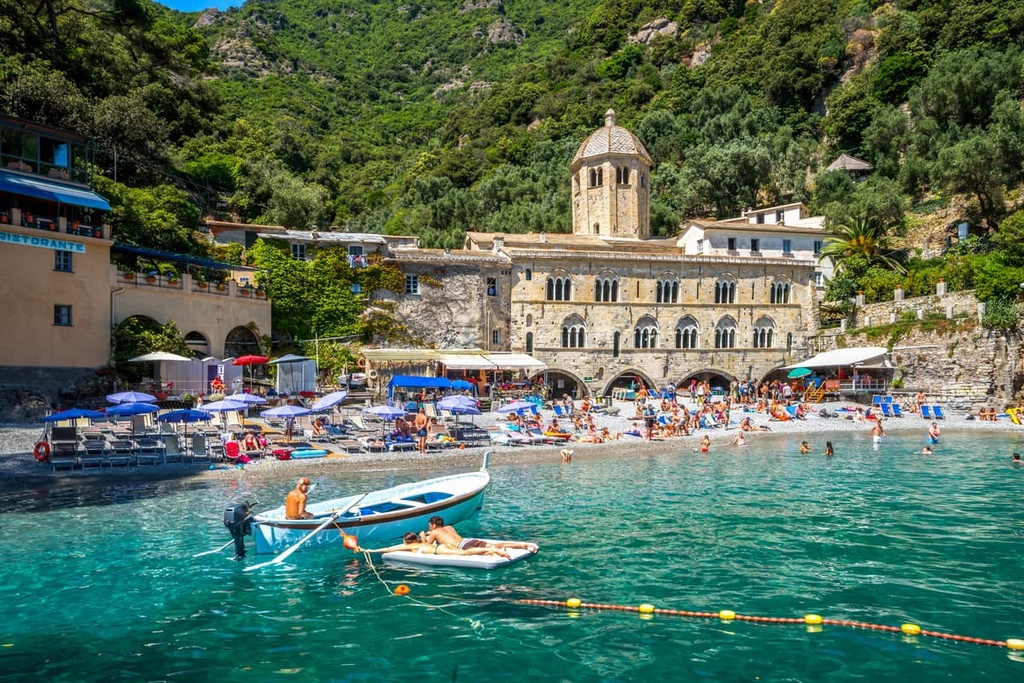
The Sentiero dei Monaci (Monks) route connects the San Fruttuoso Abbey to other churches and monasteries on the promontory.
The route is broken down into 4 stages, starting from the Millenaria church: Millenaria church to San Nicolò, Mortola to San Fruttuoso, San Fruttuoso to Sant'antonio di Niasca, and Sant’antonio di Niasca to San Girolamo della Cervara.
Looking for a place to stay during your visit to Portofino Natural Regional Park? Here are some of the best places to stay and visit in the area:
Portofino is a small Italian fishing town made famous by its picturesque harbor. Despite its humble origins, it’s now a stop on most celebrities' summer Mediterranean yachting tours.
Here, you’ll find high quality restaurants and designer stores, as well as plenty of super yachts in the harbor. You can discover the Castello Brown fortress perched on the hill above the harbor. The fortress hosts art exhibitions and it also offers views across the bay. A little further onward, you can walk to the lighthouse to take in incredible views along the coast.

Known affectionately as ‘Santa’ by many Milanese, Santa Margherita Ligure is buzzing with activity in the summer. It became a renowned tourist resort after World War II.
The town is now a great spot to base yourself in the Italian riviera. It has plenty to offer from good quality restaurants and hotels to beach clubs and clear, shimmering waters. Head to the beautiful bay at Paraggi for incredible swimming and the option to rent stand up paddle boards and kayaks.

Camogli is a beautiful, quaint fishing village and popular tourist town on the aptly named Paradise Gulf. Previously an important seaport, it now is better known for its colorful houses by the beach, good seafood, and of course the local speciality, focaccia!
Rapallo has been the winter residence of many affluent Italians living in north western Italy for many decades. Other than enjoying the sea and having access to the Portofino Natural Regional Park, tourists to Rapallo can enjoy the castle, which was actually built to protect Rapallo from pirates.
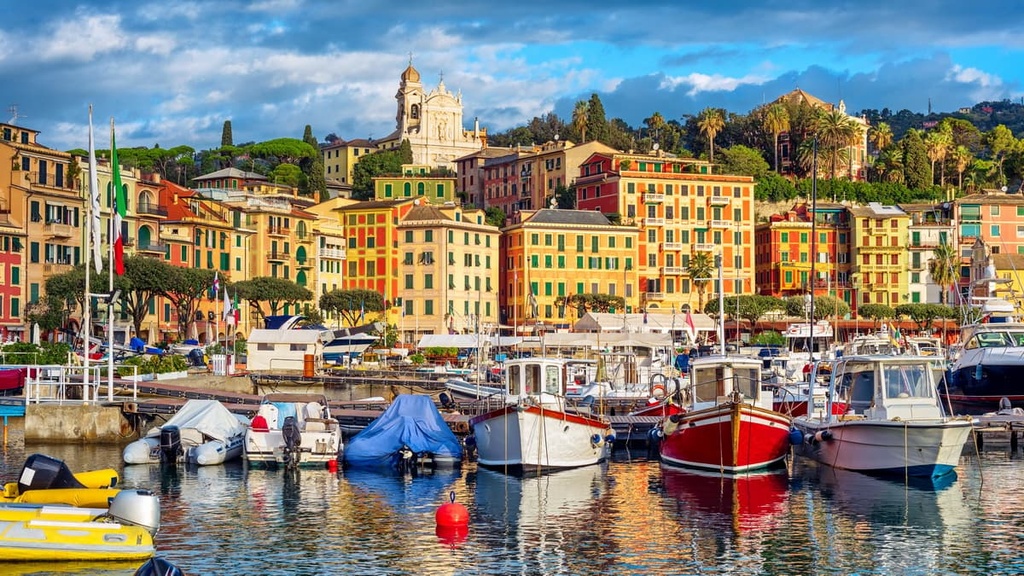
Genoa is the capital of the Ligurian region, and it is known as the birthplace of the sailor Christopher Columbus. The city displays many examples of Medieval, Renaissance, Baroque, and Gothic architecture.
In its heyday during the twelfth and thirteenth centuries, Genoa had one of the largest naval powers in Europe. It was considered one of the wealthiest cities in the world due to its leading role in Europe’s commercial trade. The city is also home to Italy’s oldest association football team, Genoa C.F.C., which was founded in 1893 by James Richardson Spensely, an English doctor.
There’s plenty to visit here, including the palazzi in via Garibaldi, maritime museum, aquarium, San Lorenzo cathedral, Palazzo Reale, Piazza de Ferrari, Christopher Colombus’s house, and Forte Diamante. You can also take a boat trip from the harbor.
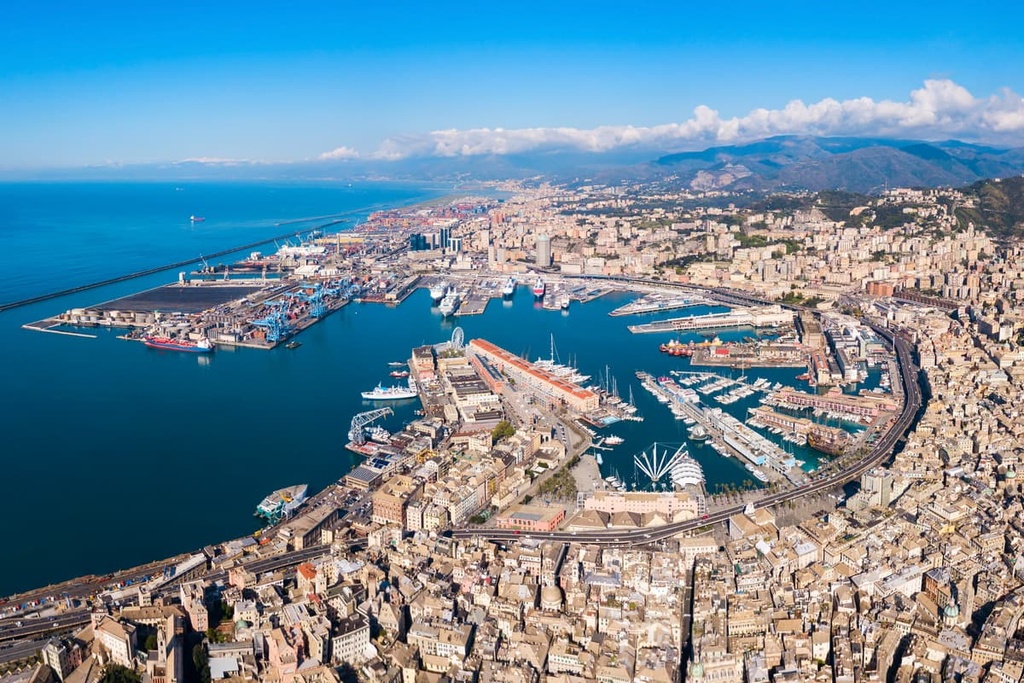
The Portofino Natural Regional Park is easy to reach by public transport or by car from Genoa, Milan, and Pisa. It’s also well connected to the nearby towns by train, ferry, and car. Here’s what you need to know about transportation options to the park.
The Portofino Natural Regional Park can be easily reached by car from Genoa (25 km/15 mi), Milan (176 km/109 mi), and Pisa (141 km/87 mi).
Parking is available in all towns, however it is generally limited due to lack of space. Make sure that you check whether your hotel has parking included before you rent a car.
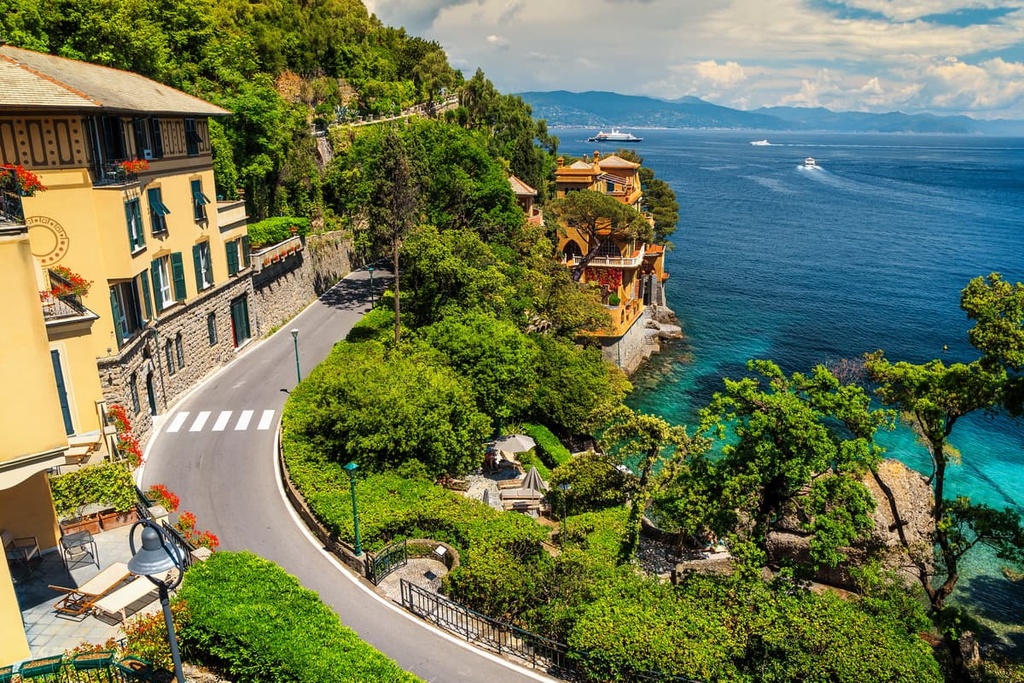
Camogli, Santa Margherita Ligure, and Rapallo are all on the train line between Genoa and Pisa.
There is also a quick Intercity train from Milan that will get you to all of these towns in around 2 hours. Portofino is not on the train line, but it can be easily reached from Santa Margherita Ligure by foot, car, or bus.
Ferries are available between Camogli, Punta Chiappa, San Fruttuoso, and Portofino. They run all year long, though they have a reduced service over the winter months.
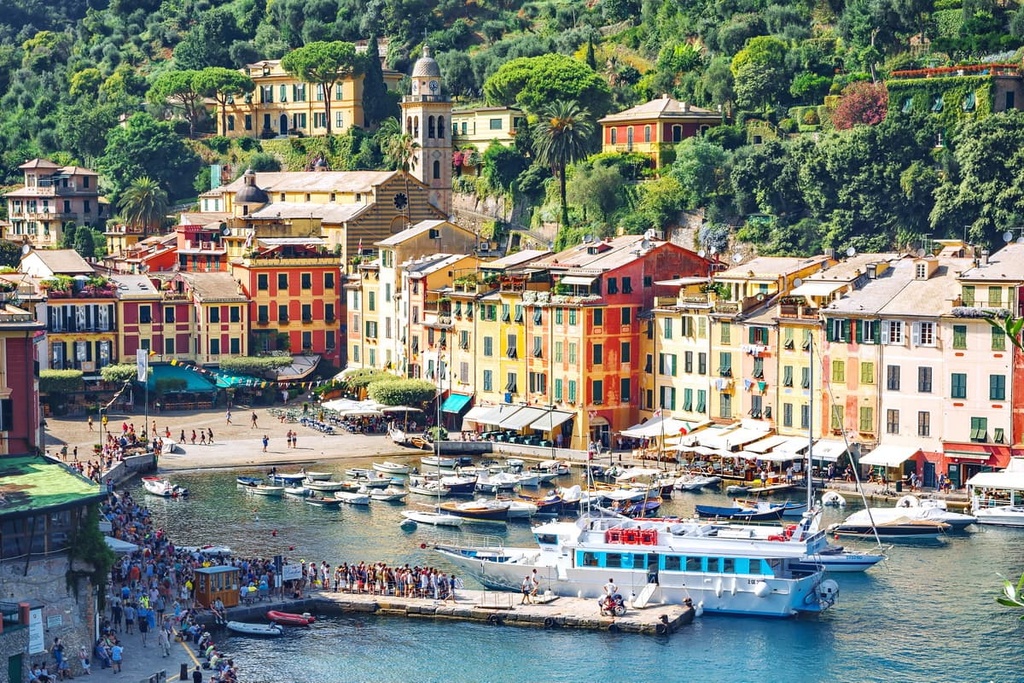
Explore Portofino Natural Regional Park with the PeakVisor 3D Map and identify its summits.








